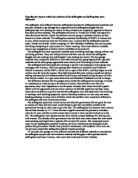Fawcett described the suffragist movement of being like a glacier; slow but unstoppable. The suffragists believed and practiced a policy of persuasion, whereby they believed that through meetings, petitions, reasoned argument, legal propaganda and the threat of tax avoidance, they would persuade Parliament to grant their demands. In 1897, large numbers of local women’s suffrage societies formed together to create the NUWSS - the largest suffrage group – with over 500 local branches throughout England, Scotland and Wales. Membership originally consisted of predominantly of middle class women but in 1901-1902 Eva Gore-booth collected signatures of 67,000 textile workers in northern England and presented it to Parliament.
The unproductive results of the NUWSS efforts of persuasion resulted in the creation of the WSPU in 1903. A breakaway group of frustrated NUWSS members in Manchester, no longer willing to restrict themselves to the constitutional methods favoured by the NUWSS, decided to take more direct action. They resolved to limit membership exclusively to women, to keep themselves free from party affiliation, and "Deeds, not Words" was their motto. These women were significantly more forceful and in January 1906 the Daily Mail created the word ‘suffragette’ in reference to WSPU members. Whereas the suffragists had restricted themselves to peaceful demonstrations and petitions the suffragettes began to smash windows and when caught they refused to be fined and chose to be imprisoned. Many of those who were sent to prison went on hunger strike. In 1909 Marion Wallace became the first suffragette to go on hunger strike. These protests grabbed the attention of the press and the public and women’s suffrage had become a national issue.
The Conciliation Bill of 1910 and the Franchise Reform Bill of 1913 both drafted in Parliament but were rejected due to bureaucratic error. The suffragettes became frustrated and felt that the only option left to them was militant action. Their campaign became more violent and suffragettes smashed windows, set light to letter boxes, seared golf courses with acid, burnt down sports pavilions, broke street lamps, stomped on flower beds, painted "Votes for Women" on the seats at Hampstead Heath, plugged up keyholes with lead pellets, slashed the cushions of train seats, staged false fire alarms, threw rocks at the windows of the Parliament building and houses of elected officials, severed telephone wires, blew up fuse boxes, placed bombs near the Bank of England, and even slashed works of art. On 4th June 1913, Emily Davison, threw herself under the King's racehorse in an attempt to disrupt the Derby. Historians may disagree as to her intentions but whatever they were the result was that she was killed. The suffragettes increasing violence alienated support for the cause and in 1912 Asquith’s attempts to give votes to some women was rejected by MPs. By 1913 many suffragettes were in prison and the Pankhursts’ were co-ordinating their campaign from France. Although they had raised their profile they had also damaged their cause. Each time the issue was raised in Parliament there was a bigger majority against votes for women.
By the outbreak of the First World War it seemed as thought the women’s suffrage movement was divided into two separate groups: the suffragists and the suffragettes. They both shared the common goal of votes for women and the only difference between them being the ways in which they tried to achieve their goal. In time the NUWSS became angry and frustrated with the WSPU and believed that they were doing more harm than good to the cause and that their actions were turning people against them. The WSPU believed that they only way to gain votes was through force but the NUWSS disagreed. The outbreak of the First World War brought an abrupt end to their campaigning and women were finally given the vote in 1928.







